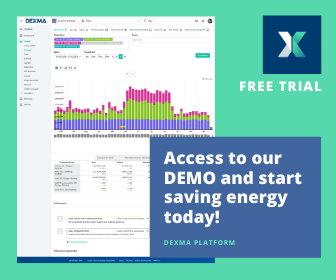A building is not intelligent for its systems’ automation level, but for its systems INTEGRATION leading to greater efficiency in operations and energy consumption.
Most existing facilities have Building Management Systems (BMS) in place that control and manage their lighting, heating, cooling and ventilation. Sometimes, they even have security or fire extinguishing systems. Those systems help the maintenance staff manage the building during daily operations. They are a step further towards more intelligent buildings that make our life easier and more comfortable. In the end, having the right temperature and lighting environment is not as easy as it seems, since it takes a proper usage of many systems involved.
The problem is that there are a huge number of Building Management Systems (BMS) from different vendors and manufacturers. Each BMS is compatible with different protocols, sensors and actuators, so when it comes to making different BMS interoperate with each other, it may prove to be a nightmare. Usually, different BMS co-exist with different tasks in the same building. For instance, one is responsible for the lighting and another for heating and cooling.
To ensure the compatibility between systems, the Technical Comittée of OASIS (Organization of the Advancement of Structured Information Standards) created a standard called OBIX in 2006. OBIX stands for Open Building Information Xchange. It consists of an initiative involving many players in the industry to define a mechanism that enables building control systems interact with each other and other business systems. Some of these players include Cisco, IBM, Schneider Electric, Trane and Tridium.
Why you should use OBIX?
OBIX is based on Web Services (a common communication interface in the business environment) using an XML data exchange protocol (a wide adopted standard of data representation). With OBIX, you are capable of accessing data and alarms from a building management system and integrate them with other systems for many buildings at once. Is it as well possible to extract alarms to be integrated with other systems like GMAO. OBIX also enables third party systems to override settings and values from the host BMS.
For a better system integration, it is important to choose OBIX interoperable systems that ensure the information is not locked inside the building management systems. In today’s era of big data processing, the sensors and actuators information can be critical for reducing the energy consumed by the equipment towards a better energy efficiency in buildings.
There’s a solution for you!
DEXMA has recently integrated OBIX in it’s Energy Management Software as a native protocol to extract data from existing systems that are OBIX enabled. Now it is possible to import all kinds of data recorded by existing Building Management Systems. The systems integrator needs only the URL (provided by the BMS), a user and a password. After verifying the connectivity, DEXMA then scans all the BMS to get all the historical data available. Therefore, the system integrator will be able to select which data points will be retrieved and stored in DEXMA Energy Intelligence, in order to unveil the maximum value it can get from this information (such as energy consumption, temperature and setpoint values).
“Assuming there is historical data stored, there’s the option to retrieve up to 1 year of data. In that case, you will be able to run regression analysis using internal DEXMA tools such as Scatter App or passive consumption analysis” says Xavier Orduña, Product Manager.
Considering all this, OBIX turns out to be the perfect tool for an integrator or an Energy Manager, to start evaluating where the energy usage can be optimised.
OBIX is better than any other standard because it is open, based on standard web technologies and data formats. Other solutions such as OPC relied too much on Windows systems and their security constraints led to very big challenges for integrators wanting to integrate systems on different computers. With an OBIX integration, DEXMA Energy Intelligence becomes the best tool for Energy Managers facing everyday challenges, dealing with many different Building Management Systems.


